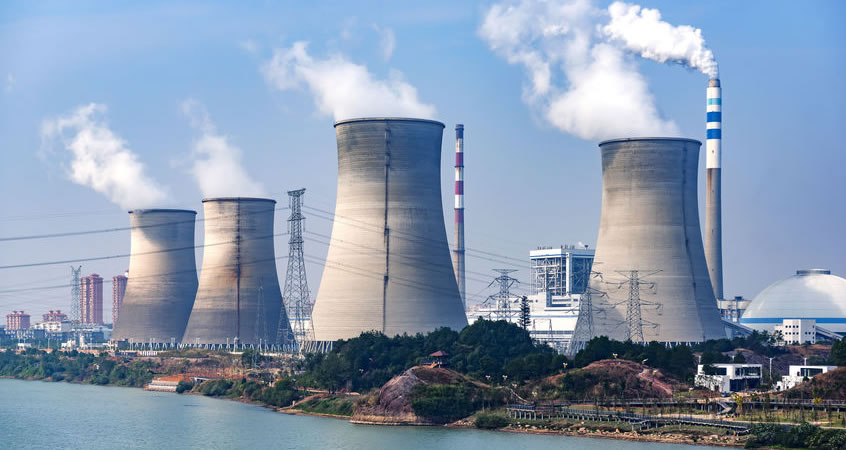Nuclear Industry Response to the 2011 Tohoku Earthquake and Tsunami in Japan
Prompt Early Response by Regulators and Industry – Shortly after the March 11, 2011 magnitude 9.0 earthquake and tsunami struck Japan, and damaged the six nuclear power plants at the Fukushima Dai-Ichi site, the US NRC began to follow the situation. The NRC also established a Task Force to develop lessons learned. The Near-Term Task Force (NTTF) Review Insights from the Fukushima Dai-Ichi Accident were published on July 12, 2011, and issued through a Request for Information under 10 CFR 50.54(f) on March 12, 2012.
The earthquake and tsunami also struck the three nuclear power plants at the Onagawa site, which is nearer to the epicenter than Fukushima Dai-Ichi, but which was safely shutdown and underwent little damage. The lessons learned from this success are also investigated, but have received less attention than the lessons to be learned from the accident at Fukushima Dai-Ichi.
The Industry Organizes its Actions – In response to the accident, to gather lessons learned, develop action plans, follow implementation, and optimize response to regulation, the nuclear power industry formed a well structured “Fukushima Response Steering Committee” which combines the expertise from the plants (the Owners Group), EPRI, INPO, and NEI.
A Confluence of Seismic-Related Activity – The NTTF recommendations arrive at a time when other seismic-related activities were underway. First, there was the 1990s seismic retrofit at the older plants under the Seismic Qualification Utility Group (SQUG) program, then the seismic Individual Plant Evaluation for External Events (IPEEE) assessment in the mid to late-1990s. More recently, the general consensus had developed that the seismic input to plants in the central and eastern US (CEUS) may have more high-frequency content than estimated in the past. This was the crux of NRC Generic Issue 199. Then, on August 23, 2011 the North Anna Power Station in Virginia was struck by a magnitude 5.8 earthquake centered approximately 10 miles from the plant. The two reactors automatically shutdown, and the plant was brought to a safe shutdown with little damage. Therefore, for engineers, the NTTF recommendations are at a confluence of these three issues: Fukushima Dai-Ichi, Generic Issue 199, and the North Anna earthquake.
Recommendations – The recommendations of the NTTF are subdivided into three tiers. The Tier 1 recommendations are to be started without delay and are the recommendations discussed herein. The following two Tier 1 recommendations focus on seismic re-assessment of US nuclear power plants:
• Recommendation 2.1 – Seismic and flood hazard reevaluations
• Recommendation 2.3 – Seismic and flood walkdowns
Recommendation 2.3 First – Recommendation 2.3 was implemented first. The guidelines for implementation of Recommendation 2.3 were developed by industry as Seismic Walkdown Guidance: For Resolution of Fukushima Near-Term Task Force Recommendation 2.3: Seismic.
Following reviews, comments, and updates, the Guidance was published as EPRI report 1025286 in June 2012, and approved by the NRC. Implementation of this Recommendation 2.3 was completed first, ahead of Recommendation 2.1, and completed in late 2012. The work completed consists of several activities, including review of the 1990s IPEEE, and sample walkdowns. At writing of this report, January 2013; the Recommendation 2.3 reports have been submitted by each plant to the NRC.
Longer Term Recommendation 2.1 – Recommendation 2.1 is an exhaustive re-evaluation of the seismic hazard of each plant and an identification of plant-specific vulnerabilities. The implementation guide for this Recommendation 2.1 is contained in a document referred to as the SPID which stands for Guidance for Screening and Prioritization Implementation Details. The SPID contains a flowchart to help plants determine the level of re-evaluation required. For most plants, the following process will address Recommendation 2.1:
• Development of site-specific probabilistic seismic hazard assessments (PSHA), using state-of-the-art techniques for defining the seismic source terms, attenuation models, and site amplification factors.
• Development of site-specific seismic ground motions response spectra (GMRS).
• Comparison of the design basis safe shutdown earthquake (SSE) to the new GMRS to determine the extent and method of re-evaluation.
• In many cases a seismic probabilistic risk analysis (SPRA) will be necessary, as outlined in the following bullets. But the above bullets are requested to be completed by September 2013.
• Development of the systems risk analysis, in the form of event trees and fault trees for the seismic event, as it challenges the reactor and the spent fuel pool (ASME/NS SA-2009, and NRC RG 1.200).
• Calculation of margins and fragilities for structures, systems and components (SSCs) called-out through the system risk analysis.
• Convolve the PSHA (the probability of earthquakes of different magnitudes), the system risk analysis, and the fragilities analysis to obtain a core damage frequency and a probability of large early release (i.e., a release before mitigative actions are implemented).
• For CEUS plants, the complete effort is requested to be completed by 2016 or 2018 depending on priority
FLEX Component – The broader lessons learned from the Fukushima Dai-Ichi go beyond earthquake and tsunami response. They are being viewed as response to an extended station blackout, when little support can be expected from the surrounding devastated communities. This broader concern is being addressed in the form of procurement and deployment of Diverse and Flexible Coping Strategies (referred to as FLEX). These are primarily portable equipment (emergency generators, pumps, hoses, etc.) and hook-ups to mitigate an extended loss of offsite power, and a loss of emergency power (station blackout). With this equipment comes the necessary training for its operation under difficult circumstances, which is also being implemented.
Summary. The events of the Great “3/11” Earthquake and Tsunami in Japan continue to significantly affect the nuclear industry worldwide. Regulators are reviewing the status of their plants, particularly concerning their vulnerability to beyond design-basis events such as the magnitude 9 earthquake and the resulting tsunami. There are many lessons-learned activities, most notable of which are seismic and flooding hazards reevaluations and corresponding walkdowns at operating plants. Broader lessons learned go beyond earthquake and tsunami response, and they focus on mitigation after extended station blackout with coping strategies for broad aspects of an accident occurrence, regardless of cause.
[readon2 url=”index.php?option=com_rsform&view=rsform&formId=4&Itemid=620″]Click to Request Info[/readon2]






